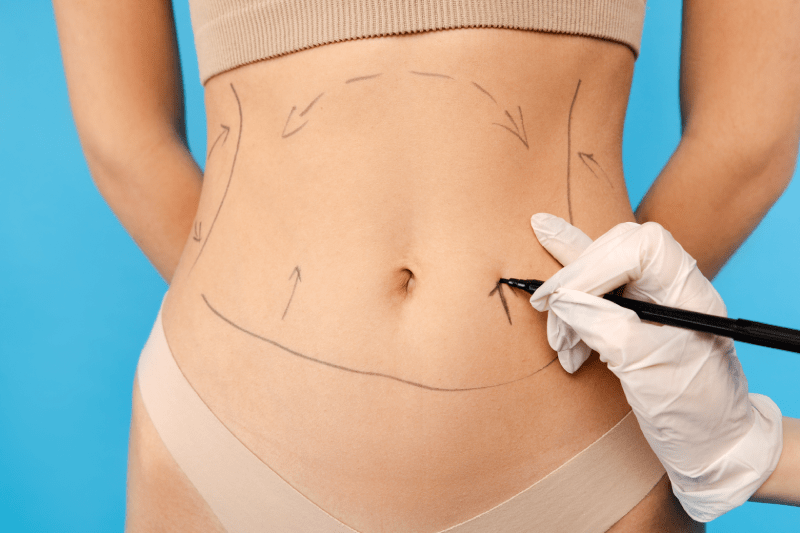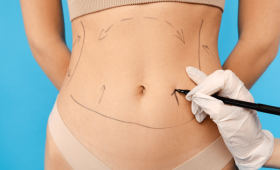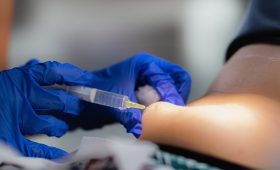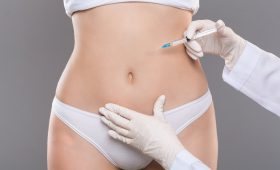Is Liposuction A Weight Loss Method?
Absolutely not; Liposuction should not be regarded as a weight loss method. Instead of shedding pounds, this procedure aims to reshape body contours by removing stubborn pockets of fat that accumulate in specific areas of the body and resist lifestyle changes. If an individual needs to lose a significant amount of weight, they are typically advised to first approach their ideal weight through diet and exercise. Liposuction is more of an aesthetic operation used to refine the body’s silhouette and create a more aesthetically pleasing shape. The permanence of the results achieved after surgery is also dependent on maintaining a healthy lifestyle.
What Is The Maximum Amount Of Fat That Can Be Removed In A Single Session?
The maximum amount of fat that can be safely removed during a single Liposuction session is strictly determined by the patient’s overall health status, body weight, and the safety limits set by the surgical team. Most experts recommend a limit that does not exceed 5% of the patient’s total body weight, which generally corresponds to a fat volume of around 5 liters. Exceeding this boundary can pose serious risks regarding anesthesia and the post-operative recovery process. Since rapidly removing too much fat from the body can lead to fluid imbalances and the risk of shock, safety is always the priority.
Can I Continue To Lose Weight After Liposuction?
Since Liposuction permanently removes fat cells from the body, it is entirely possible to continue to lose weight after the surgery by maintaining a healthy lifestyle. In fact, adopting a balanced diet and regular exercise routine following the procedure both optimizes the results of the surgery and helps you reach your overall weight loss goals. The body’s new contour after Liposuction can motivate many individuals to adopt healthier habits. The key is to prevent the remaining fat cells from increasing in size.
Can All The Fat In My Body Be Removed?
No, removing all the fat from the body is neither the goal nor safe for health. The body requires a certain amount of fat for its normal functioning and healthy appearance. Liposuction targets subcutaneous fat—the fat located just beneath the skin’s surface that is often stubborn. Visceral fat, which is deeper and surrounds the organs, cannot be removed by this method and can only be reduced through diet and exercise. The goal of the surgery is to provide a natural and aesthetically pleasing contour to the body without going to extremes. Excessive fat removal can lead to an irregular and unnatural appearance.
When Do The Results Of Liposuction Start To Become Visible?
While the initial signs of Liposuction results are visible immediately after surgery, the final and complete results may take several months to fully emerge. Swelling (edema) and bruising are common in the first few weeks, which prevents the body’s lines from being clearly seen. Most of the edema subsides within the first few weeks, but it can take 3 to 6 months for the swelling to fully disappear and for the skin to adapt to the new contours. Wearing a compression garment is very important during this period. Achieving your body’s final shape is a time-consuming process, so patience and adherence to recovery instructions are essential.
What Should Be The Ideal Weight For Liposuction?
The ideal weight for Liposuction is typically near or slightly above the person’s Ideal Body Weight (IBW). Individuals with a Body Mass Index (BMI) generally under 30 are the most suitable candidates. If the BMI is very high, it is usually recommended that weight loss be achieved first through non-surgical methods. The aesthetic benefit of Liposuction may be limited in very overweight individuals, and the risk of complications increases. For successful results, Liposuction should generally be applied to individuals who have stable weight and localized fat deposits.
Does Liposuction Offer Permanent Weight Loss?
The fat cells removed with Liposuction are permanently taken away from the body, and these cells do not regenerate. However, this does not mean the operation guarantees permanent weight loss for the individual. If the person continues to consume excessive calories and leads a sedentary lifestyle after the surgery, the remaining fat cells in the body can enlarge, creating new fat deposits and leading to weight gain. Therefore, permanent weight loss requires a decisive lifestyle change aimed at maintaining the initial advantage provided by Liposuction.
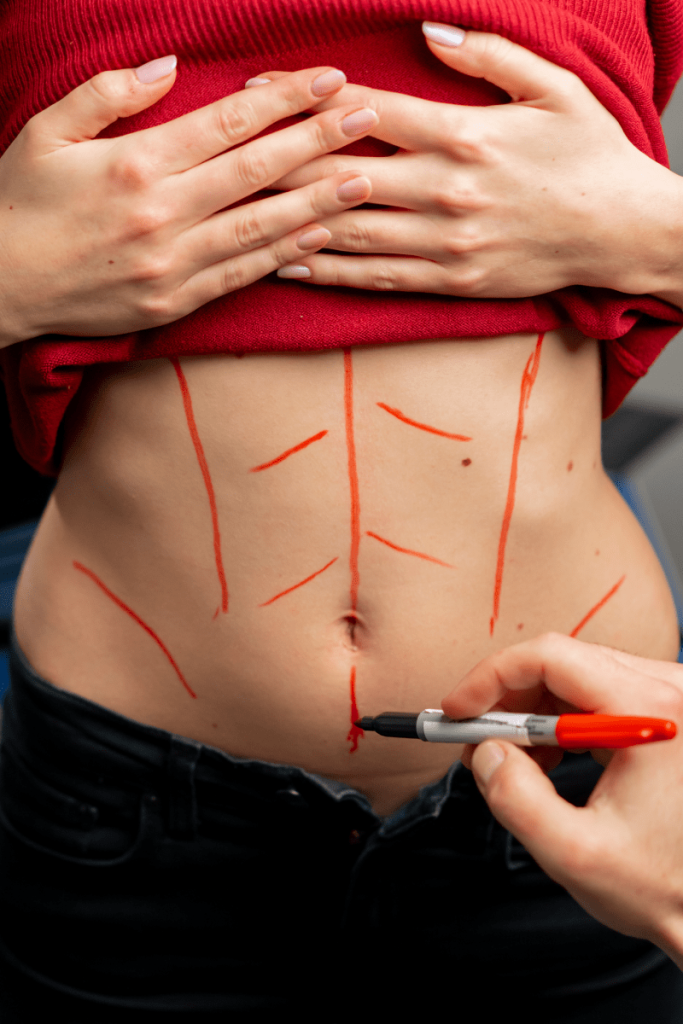
What Happens If I Gain Weight After Liposuction?
Since a large portion of fat cells in the Liposuction treated area has been removed, even if the person gains weight, this area will tend to accumulate less fat compared to other regions. However, if the weight gain is significant, the remaining fat cells in the body may grow, and other parts of the body (such as the arms, back, or legs) may increase disproportionately, which can ruin the contour achieved by Liposuction. In this scenario, the body’s balance is lost. Healthy nutrition and regular activity are the keys to long-term preservation of the result.
How Many Different Body Areas Can Be Treated With Liposuction Simultaneously?
The number of body areas that can be treated with Liposuction simultaneously is closely related to the total volume of fat to be removed and the overall duration of the operation. To avoid exceeding safety limits and compromising the patient’s recovery, it is generally possible to perform the procedure on up to 3 to 5 areas. If intervention is required for multiple large-volume areas, it is considered safer to divide these procedures into different sessions. The surgical team’s priority is always the patient’s safety and minimizing the risk of complications. This determination must be made after a detailed preliminary assessment.
Does Liposuction Remove Fat Permanently?
Yes, the fat cells removed during the Liposuction procedure are permanently eliminated from the body. The formation of new fat cells in an adult body is rare, so the removed cells are not replaced. This ensures that the body contour provided by Liposuction is more permanent compared to other weight-loss methods. However, this permanence only applies to the removed cells; if the person continues to gain weight, the volume of existing fat cells in other parts of the body can increase, changing the overall body fat percentage and appearance.
Does Skin Sagging Occur After Liposuction?
The risk of skin sagging after Liposuction depends largely on the patient’s skin elasticity and the amount of fat removed. Young skin with good elasticity tends to tighten and easily adapt to the new contour after fat removal. However, if skin elasticity is poor due to age, sun exposure, or genetic factors, or if a very large volume of fat is removed, some sagging may occur. Current Liposuction techniques (such as laser-assisted methods) aim to help the skin tighten and thus reduce this risk. Wearing a compression garment is important to prevent this outcome.
Is A Specific Diet Required Before Liposuction?
While there is no mandatory specific diet required before Liposuction, entering the procedure with a healthy and stable weight always yields the best results. Surgeons generally recommend that the patient maintain a balanced and nutritious diet in the weeks leading up to the surgery and avoid excessive weight gain. Crucially, discontinuing the use of alcohol, tobacco, and certain supplements immediately before the operation is vital to reduce anesthesia risks and support the recovery process. Balanced nutrition is important to optimize overall health status.
How Long Does The Liposuction Surgery Take?
The duration of Liposuction surgery varies significantly depending on the number of body areas being treated, the estimated volume of fat to be removed, and the Liposuction technique used. Generally, a procedure performed on a single small area may take less than an hour, while a more extensive procedure involving the contouring of multiple large areas can last up to 3 to 4 hours. The surgical team’s priority is to ensure the surgery is completed safely and carefully. The approximate duration of the operation is usually communicated to the patient during the planning stage.
What Is The Recovery Process Like After Liposuction?
The recovery process after Liposuction varies from person to person, but generally, rest is essential for the first few days. Bruising and swelling are common and can be managed with pain medication. Most patients can return to light activities within a week, while returning to normal work life typically takes 1 to 2 weeks. Avoiding strenuous exercises and consistently wearing compression garments (corset) over the treated area for the prescribed period (usually several weeks) are critical steps in recovery. It can take months for the swelling to completely subside.
When Can I Return To My Daily Life?
The speed of returning to daily life after Liposuction depends on the scope of the procedure and the individual’s healing rate. Most patients can start light walking two to three days after the surgery and return to desk jobs within a week. For more physically demanding jobs and intense sports activities, it is generally necessary to wait 4 to 6 weeks. Since the body needs rest, it is best to start slowly and listen to your body’s signals. The compression garment provides significant support during this process.
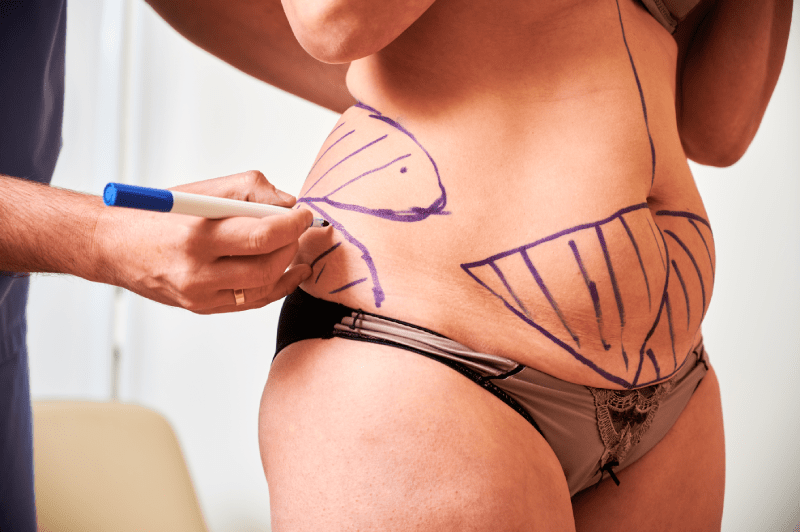
When Can I Start Exercising After Liposuction?
The return to exercise after Liposuction should be gradual. Light walking can usually be resumed within the first few days, as it supports blood circulation and aids healing. Moderate-level exercises (such as light cardio) may be permitted after approximately 2 to 3 weeks. It is typically advised to wait 4 to 6 weeks before starting intense exercises like heavy lifting, running, or strenuous abdominal workouts that strain the body. It is crucial to get your doctor’s approval before resuming exercise to ensure you are not overexerting the area.
Which Areas Of The Body Can Be Treated With Liposuction?
Liposuction can be applied to almost any area of the body where stubborn fat deposits are present. The most commonly requested areas include the abdomen and waist (love handles), the inner and outer thighs, hips, arms, back (bra-line area), inner knees, and even the neck and chin area (double chin). The procedure aims to remove fat from these areas, making the region look more harmonious and aesthetic with the overall body contour. The anatomical structure of each area determines the quantity of fat that can be safely removed.
Are The Results Of Liposuction Permanent?
Yes, the results of Liposuction are permanent in the long term because the fat cells removed during the procedure do not return to the body. However, the permanence of the results depends heavily on the patient’s lifestyle choices. If a healthy diet and regular physical activity are not maintained after the surgery, the remaining fat cells in the body can enlarge, leading to changes in the overall body shape. Liposuction provides a starting point for a better contour; maintaining that contour is entirely the individual’s responsibility.
Is There A Minimum Or Maximum Age Limit For Liposuction?
While there is no definitive upper age limit for Liposuction, candidates must have suitable general health and skin elasticity. Most surgeons prefer patients to be over the age of 18. Older patients may have reduced skin elasticity, increasing the risk of skin sagging after Liposuction. Therefore, Liposuction in older patients may need to be combined with an additional lifting procedure, such as a tuck. The most important criteria are not age, but the person’s overall health status and suitability for surgery.
Is There Pain During The Liposuction Surgery?
Since Liposuction surgery is usually performed under general anesthesia or deep sedation, no pain is felt during the procedure itself. After the surgery, it is normal to experience mild to moderate pain, tenderness, and soreness in the treated areas that may last for a few days. This pain is generally easily managed with prescribed pain medications. Patients often describe the pain as a feeling similar to muscle soreness or deep bruising. This discomfort rapidly diminishes as healing progresses.
How Important Is The Use Of A Compression Garment After Liposuction?
The use of a compression garment (corset) after Liposuction is of vital importance for the quality of the recovery process and the final result. The garment helps reduce swelling (edema) and bruising by applying constant and even pressure to the treated areas. Furthermore, it supports the closing of the space beneath the skin and helps the skin firmly adapt to the new body contours, minimizing the risk of skin sagging. The garment should be worn almost continuously for the duration specified by the surgeon, typically for 4 to 6 weeks.
What Are The Risks Of The Liposuction Procedure?
As with any surgical procedure, Liposuction carries some risks, though they are generally low. Potential risks include infection, bleeding, reactions related to anesthesia, temporary bruising and swelling on the skin, loss of sensation, or asymmetry. More serious but rare risks include fluid imbalances or fat embolism. Risks can be significantly mitigated through careful candidate selection, an experienced team, and strict adherence to post-operative instructions. Potential risks must be discussed in detail before the surgery.
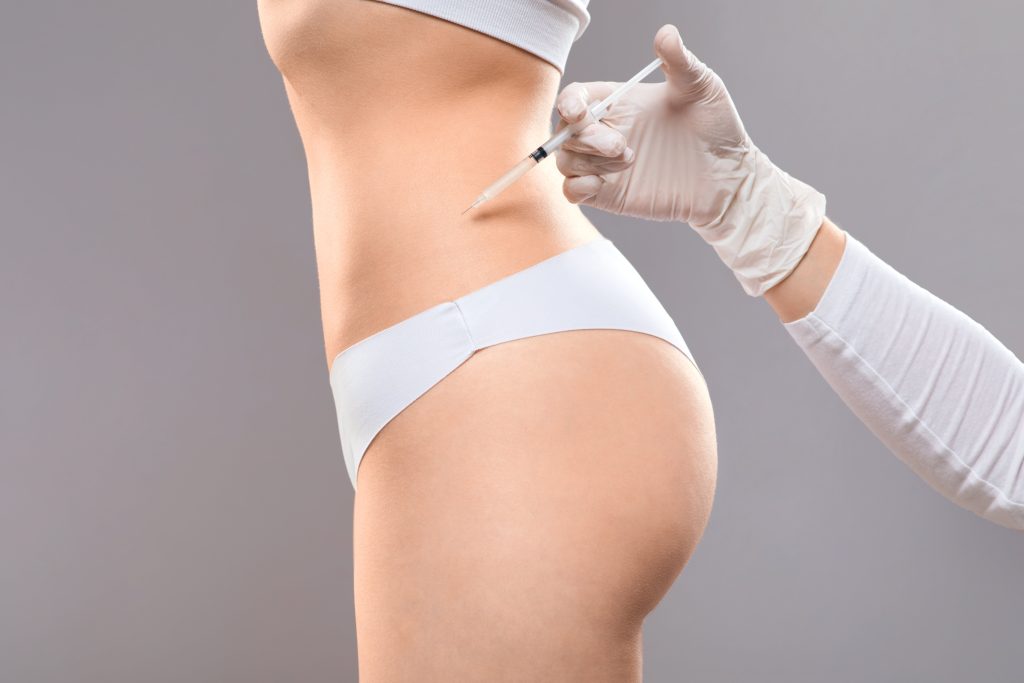
When Do The Swellings Completely Subside After Surgery?
The swelling (edema) that occurs after Liposuction is the body’s natural response to surgical trauma. The initial prominent swelling generally decreases significantly within the first 2 to 4 weeks. However, it can take 3 to 6 months for the remaining, lighter swelling to completely subside and for the body contours to be finally defined. In some patients, this period may extend up to 9 months. Regular use of the compression garment, light walking, and a healthy diet are important factors that help accelerate this process. Patience is a key part of the recovery process.
Is Liposuction Sufficient On Its Own?
Whether Liposuction is sufficient on its own depends on the patient’s goals and body type. If the main concern is stubborn fat accumulation in specific areas (such as the waist or hips), even though the overall body weight is normal, Liposuction alone can yield excellent results. However, if the patient has both excessive fat and significant excess skin or sagging, Liposuction may need to be combined with an additional tuck procedure, such as a tummy tuck (abdominoplasty) or arm lift.
Will There Be Scars After Liposuction?
Liposuction requires very small incisions at the entry points of the cannula used to remove the fat. These incisions are usually only a few millimeters long and are strategically placed within the body’s natural creases or hidden areas. Although they may be noticeable initially, these scars fade over time and, in most cases, become virtually indistinguishable. To minimize the visibility of scars, it is important to follow post-operative wound care instructions and protect them from the sun.
Who Are The Most Suitable Candidates For Liposuction?
The most suitable candidates for Liposuction are generally people who are healthy, at a stable weight, but have localized fat deposits in certain areas that are resistant to diet and exercise. Good skin elasticity is also important, as it allows the skin to better adapt to the body’s new contour after Liposuction. Factors such as having realistic expectations and being a non-smoker also increase a candidate’s suitability. A detailed medical history assessment is performed before Liposuction.
Is Massage Necessary After Liposuction?
Lymphatic Drainage Massage is often recommended after Liposuction to support the healing process. This specialized type of massage helps the accumulated fluid (edema) and swelling dissipate more quickly after surgery. It can also help soften the firmness and irregularities that might occur in the treated areas. When and how often the massage should be performed will be determined by your surgeon based on the scope of your surgical procedure. This massage is a critical step that helps speed up the recovery process.
Can The Removed Fat Be Used For Another Purpose?
Yes, the fat removed by Liposuction can be used for other purposes, such as augmenting or contouring other areas of the body through a procedure called fat grafting (fat transfer) or lipofilling. This fat is commonly used for breast augmentation or shaping, buttock augmentation (BBL), or filling in depressions on the face. To make the fat reusable, it must be purified after removal through a special processing procedure. These combined procedures offer the possibility of improving body contour in a more comprehensive way.
How Long Do Bruises Last After Liposuction?
Bruising after Liposuction is a natural result of the blood vessels being affected during the surgical procedure. While the severity and duration of bruising vary from person to person, they generally peak within the first week and then gradually begin to fade. Most bruises substantially disappear within 2 to 4 weeks. Wearing a compression garment during this period and using creams recommended by your doctor can help the bruises heal faster. It is necessary to allow some time for the bruises to fully resolve.
What Determines The Cost Of Liposuction?
The cost of Liposuction can vary significantly depending on several factors. The most important determinants include the number of body areas to be treated (i.e., the scope and duration of the operation), the Liposuction technique to be used (traditional, laser-assisted, ultrasound-assisted, etc.), the geographical location and costs of the facility where the procedure is performed, and whether an experienced team is involved. For accurate pricing, an evaluation based on the individual’s specific needs and goals is required.
Why Is Paying Attention To Nutrition Important After Liposuction?
Paying attention to nutrition after Liposuction is critical not only for maintaining weight but also for fast and healthy healing. Adequate protein intake is necessary for the body to repair itself and for wound healing. A diet rich in fresh fruits, vegetables, and healthy fats, which have anti-inflammatory properties, can help reduce swelling and edema. Sufficient water consumption maintains fluid balance. Avoiding overly salty and processed foods helps reduce edema and directly affects the quality of the results.
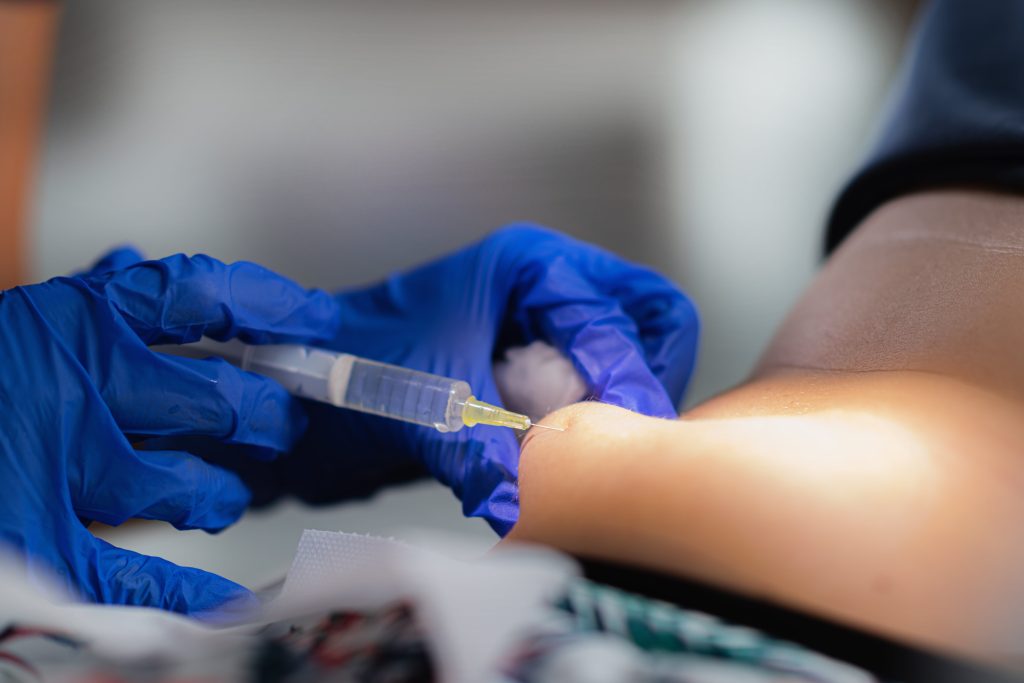
Can The Liposuction Procedure Be Performed Under Local Anesthesia?
Which type of anesthesia is used for the Liposuction procedure primarily depends on the scope of the procedure and the number of areas to be treated. If the procedure covers a single, small area and the volume of fat to be removed is low, it may be performed under local anesthesia and sedation. However, for more extensive and longer-duration Liposuction procedures covering multiple areas, general anesthesia is usually preferred for the patient’s comfort and safety. The choice of anesthesia is determined by the mutual decision of the patient and the surgical team.
Does The Body Shape Change Immediately After Liposuction?
Yes, although the changes in body shape are noticeable immediately after Liposuction, this initial appearance is not the final result due to swelling (edema). The void of the removed fat and the initial contour improvement are visible right after the surgery, but the swelling resulting from surgical trauma obscures this improvement. The actual recovery and the process of contour definition occur in the following weeks and months as the swelling subsides and the skin tightens. A patient recovery process will allow you to see the true transformation.
What Should I Do To Maintain Liposuction Results?
The only way to permanently maintain the body contour achieved with Liposuction is to adopt a healthy lifestyle. This includes regular physical activity (cardio and strength training several times a week) and balanced nutrition. Avoiding high-sugar and processed foods, practicing portion control, and drinking enough water are essential. Avoiding weight gain prevents other areas from growing disproportionately, as the fat cells in the Liposuction-treated area have been removed, ensuring the long-term preservation of the aesthetic appearance achieved.
How Effective Is Liposuction?
Liposuction is a highly effective method for eliminating localized fat deposits and improving body contour. For the right candidates (those with stable weight and good skin elasticity), the results can be dramatic and permanent. The procedure’s effectiveness should be measured by its ability to give the body a more proportionate, smooth, and aesthetic shape, not by its ability to reduce the person’s overall body weight. Patient satisfaction rates are high, but this success is directly related to adherence to post-surgical lifestyle changes.
Discover Cure Holiday For Your Recovery Journey
Liposuction is a powerful tool for reshaping your body contours. To learn more about this procedure, determine the most suitable surgical plan for your personal situation, and connect with experienced teams in Turkey, you can contact Cure Holiday. Cure Holiday provides professional support and consultation to offer you a personalized, safe, and comfortable aesthetic experience.
